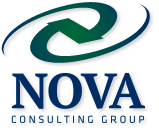The Urban Dictionary defines “hockey stick” as “a line graph that stays relatively flat for most of its length then spikes upward abruptly near its end….”
Does this describe how your revenue stream looks? If it does, bear in mind that while you may have “made your numbers”, those numbers were realized at a significant cost over what the “business” typically costs.
The “hockey stick effect” is a symptom of a larger problem within your sales process. Inconsistent revenue throughout the measured period (week, month, or quarter), weak or few pipeline opportunities, misaligned goals, weak (customer-prospective) value propositions and hands off the process management are but some of contributing factors.
This “buy the business at any cost” both financially and operationally is unsustainable. Quality drops and costs increase. Sales teams, under a barrage of incoming, unrealistic demands, become burnt out and morale suffers; eventually the turnover starts which imposes additional increases in costs and loss revenue opportunities.
Panic in the sales team also damages your relationship with your clients – sometimes beyond repair.
So why don’t companies stop the insanity? Because weaning the company off of the “hockey stick-effect” is hard. It requires looking at everything, strategy, process and execution. It requires realignment with products, markets, strategies, skill sets, processes and relationships. It is not easy but it is not impossible. Like any transformative change it takes forward-looking leadership from the C-Suite.
For those tied of the dark side of the “hockey stick” revenue cycle and ready to make meaningful, sustainable change, here are a few suggestions:
- Engage your customers. Understand their buying cycle. They sign your revenue checks. It is about them and not you. No amount of “canned” sales process will work. We live in a changed world where your clients want what they want, when they want it and how they want it. They know more about you and your competitors than you think and are now empowered with information parity. Acknowledge it, take it in and integrate your client’s buying cycle into your selling process.
- Re-evaluate your value proposition. Has your product become irrelevant? Are you just one of many, a commodity? Lost your (competitive) edge. Bringing value to your clients is no longer just about your product or service. Value is defined by your client. As with buying cycles, understand how your clients define value. Work to elevate yourself from a “supplier” or “vendor” status to that of a true partner or trusted advisor. This can only be done with a client focused approach. True value is achieved when you build your client’s reputation, grow their networks, promote them in their “communities” and include them in your decision-making process when those decisions impact them.
- Lead the transformation. This is a leadership issue. If you expect your company to change, you will set the direction. It is up to you.
The first half of 2013 is in the books. How will your company respond to the second half?
More of the same?
If your company suffers from the “hockey stick effect”, you are on borrowed time and this half may be your last.
Take action now.


